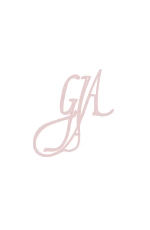- |
User Links
326
Take Up Your Cross
Hymn Information
- First Line
- Take up your cross, the Savior said
- Author
- Charles W. Everest, 1814-1877 (alt.)
- Tune Name
- ERHALT UNS, HERR
- Harmonizer
- Johann Sebastian Bach, 1685-1750 (alt. )
- Tune Source
- J. Klug's <i>Geistliche Lieder</i>, Wittenberg, 1543
- Topic
- The Cross · Discipleship · Perseverance · Walk with God
Copyright Information
- Text Copyright
- Public Domain
- Tune Copyright
- Public Domain
- Reprint/Projection Information
- Words and Music: The Words and Music are in the Public Domain; you do not need permission to project or reprint the Words and Music.
Full Text
Scripture References
326
Take Up Your Cross
Hymn Story/Background
The tune ERHALT UNS, HERR was adapted from an older chant tune associated with the text "Veni Redemptor gentium". Some scholars assume that Luther did the arranging himself. The tune was published with Luther's text in Klug's Geistliche Lieder (1543). Johann S. Bach included this chorale in his Cantata 126.
—
Emily Brink
Author Information
Everest, Charles William, M.A., born at East Windsor, Connecticut, May 27, 1814, graduated at Trinity College, Hartford, 1838, and took Holy Orders in 1842. He was rector at Hamden, Connecticut, from 1842 to 1873, and also agent for the Society for the Increase of the Ministry. He died at Waterbury, Connecticut, Jan. 11, 1877 (See Poets of Connecticut, 1843). In 1833 he published Visions of Death, and Other Poems; from this work his popular hymn, “Take Up Thy Cross,” is taken.
—
John Julian Dictionary of Hymnology
Composer Information
Johann Sebastian Bach (b. Eisenach, Germany, 1685; d. Leipzig, Germany, 1750) came from a family of musicians. He learned to play violin, organ, and harpsichord from his father and his older brother, Johann Christoph. Bach's early career developed in Arnstadt and Muhlhausen, particularly at the court of Duke Wilhelm Ernst in Weimar. During this period he composed cantatas and most of his large organ works. In 1717 Bach became director of music for Prince Leopold in Anhalt-Cathen, for whom he composed much of his instrumental music-orchestral suites and concertos as well as The Well-Tempered Clavier. In 1723 he was appointed cantor of the Thomas Schule at Leipzig and director at St. Thomas and St. Nicholas churches and at the University of Leipzig. During that time he wrote his large choral works, 165 cantatas, and more compositions for organ and harpsichord. Although Bach's contribution to church music was immense and his stature as the finest composer of the Baroque era unparalleled, he composed no hymn tunes for congregational use. He did, however, harmonize many German chorales, which he used extensively in his cantatas, oratorios, and organ works. These harmonizations were published posthumously by his son Carl Phillip Emmanuel as 371 Vierstimmige Choralgesiinge.
—
Bert Polman
Suggestions or corrections? Contact us


 My Starred Hymns
My Starred Hymns






